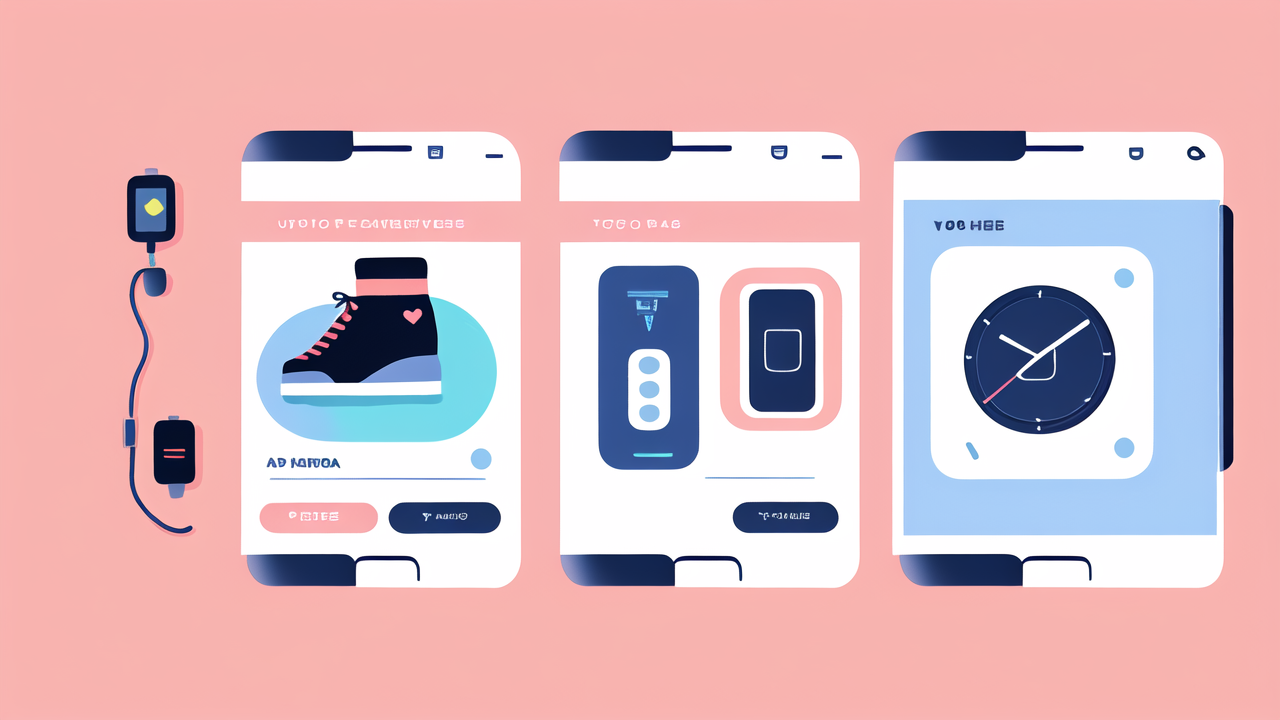Understanding the Smartwatch Market Landscape in the United States
The Evolution of Smartwatches: From Novelty to Necessity
Smartwatches have come a long way since their inception. They started as simple gadgets that could tell time and maybe show notifications. Now, they're powerful devices that can track health, make calls, and even save lives.

The first smartwatches were bulky and had limited features. They were seen as cool toys for tech enthusiasts. Over time, they became sleeker and more functional. Battery life improved, and screens got better.
Today, smartwatches are essential for many people. They help users stay connected, monitor health, and manage daily tasks. The evolution has been driven by advances in technology and changing consumer needs.
Smartwatches now offer features like heart rate monitoring, GPS tracking, and mobile payments. Some can even detect falls or irregular heartbeats. As they become more useful, more people see them as must-have devices.
Key Market Players and Innovations in Smartwatches
The smartwatch market is dominated by a few key players. Apple leads the pack with its Apple Watch series. Samsung, Garmin, and Fitbit are also major contenders. Each brand brings unique features to the table.
Apple's innovations include ECG capabilities and fall detection. Samsung focuses on long battery life and robust health tracking. Garmin excels in sports and outdoor features. Fitbit emphasizes fitness and wellness.
Other players like Fossil and Mobvoi offer stylish options with Google's Wear OS. They cater to those who want a more traditional watch look. Innovations in this space include better voice assistants and more apps.
The competition drives constant innovation. We see improvements in battery life, health features, and design. Some watches now offer sleep tracking, stress monitoring, and even blood oxygen level checks.
The Role of Consumer Demand in Shaping the Smartwatch Industry
Consumer demand plays a huge role in shaping the smartwatch industry. As users ask for more features, companies race to provide them. This has led to rapid advancements in smartwatch technology.
Health and fitness tracking has become a major focus due to consumer interest. Many people now use smartwatches to monitor their workouts and overall well-being. This has pushed companies to add more sensors and health features.
Consumers also want longer battery life and better displays. This has led to innovations in power management and screen technology. Some watches now offer always-on displays without sacrificing battery life.
Style is another important factor. Users want watches that look good and fit their personal style. This has resulted in a wide range of designs, from sporty to elegant. Some brands offer customizable faces and bands.
Evaluating Smartwatches for Your Individual Needs
Assessing Health and Fitness Features for the Wellness Enthusiast
For wellness enthusiasts, health and fitness features are key when choosing a smartwatch. Most modern smartwatches offer basic activity tracking. This includes step counting, calorie burn, and distance traveled.

More advanced features to look for include:
- Heart rate monitoring
- GPS tracking for runs and bike rides
- Sleep tracking
- Stress level monitoring
- Blood oxygen level measurement
Some watches offer specialized tracking for specific sports. Swimmers might want water resistance and stroke counting. Runners may prefer detailed pace and cadence data.
Consider how the watch integrates with fitness apps. Many people use apps like Strava or MyFitnessPal. A watch that syncs well with your preferred apps can enhance your fitness journey.
Also, think about motivational features. Some watches offer challenges or achievement badges. These can help keep you motivated to reach your fitness goals.
The Importance of Compatibility with Lifestyle Apps and Services
When choosing a smartwatch, compatibility with your lifestyle apps and services is crucial. Your watch should work seamlessly with your smartphone and favorite apps.
For iPhone users, the Apple Watch offers the best integration. It works perfectly with iOS apps and services. Android users have more options, but should check compatibility carefully.
Consider these factors:
- Does the watch work with your phone's operating system?
- Can it display notifications from your most-used apps?
- Does it integrate with your preferred music streaming service?
- Can you use it for mobile payments with your bank?
Some watches allow you to install apps directly. Others rely more on the connected phone. Think about which approach suits your needs better.
Also, consider smart home integration. Some watches can control smart lights or thermostats. This can be handy if you're invested in the smart home ecosystem.
Considerations for Professionals: Smartwatches in the Workplace
For professionals, a smartwatch can be a valuable tool in the workplace. It can help manage time, stay connected, and boost productivity. When choosing a watch for work, consider these factors:
- Does it have a professional appearance suitable for your workplace?
- Can you quickly view and respond to important notifications?
- Does it offer calendar integration for managing your schedule?
- Is there a silent mode or do-not-disturb feature for meetings?
Some watches offer specific work-related features. These might include:
- The ability to join video calls from your wrist
- Voice-to-text for quick email responses
- Task management apps
- Time tracking for projects
Battery life is crucial for professionals. You don't want your watch dying in the middle of a workday. Look for watches that can last at least a full day on a single charge.
Privacy and security features are also important. If you handle sensitive information, ensure the watch has adequate security measures. Some offer password protection or automatic locking when removed from the wrist.
Making an Informed Purchase: Tips and Best Practices
How to Read and Understand Smartwatch Spec Sheets
When shopping for a smartwatch, you'll encounter spec sheets full of technical jargon. Understanding these can help you make an informed decision. Here's a quick guide to key specs:

- Display: Look for size, resolution, and type (e.g., OLED, LCD).
- Battery life: Check both active use and standby times.
- Processor: This affects speed and smoothness of operation.
- Storage: Important if you plan to store music or apps on the watch.
- Sensors: These enable various health and fitness tracking features.
- Water resistance: Crucial if you want to swim with your watch.
Don't get caught up in numbers alone. A watch with lower specs might perform better due to optimized software. Read reviews to get a sense of real-world performance.
Pay attention to connectivity options. Most watches offer Bluetooth, but some also have Wi-Fi or cellular capabilities. The latter allows the watch to function independently of your phone.
Navigating the Market: Where to Look for the Best Deals
Finding the best deal on a smartwatch requires some strategy. Here are some tips:
- Compare prices across multiple retailers. Don't just rely on one store.
- Watch for seasonal sales, especially during Black Friday and Cyber Monday.
- Consider last year's models. They often offer great value at lower prices.
- Check for bundle deals that include extra bands or chargers.
- Look for refurbished options from reputable sellers. These can offer significant savings.
Online marketplaces like Amazon often have competitive prices. But don't overlook direct sales from manufacturers. They sometimes offer exclusive deals or colors.
Sign up for newsletters from your favorite tech retailers. They often send subscriber-only deals. Follow tech deal websites and forums for user-reported discounts.
Remember, the cheapest option isn't always the best value. Consider the watch's features and how well it meets your needs. A slightly pricier watch might be worth it if it has the right features.
Future-Proofing Your Smartwatch: Understanding Updates and Compatibility
When buying a smartwatch, think about its future. You want a device that will remain useful for years. Here's what to consider:
- Software updates: Look for brands with a track record of regular updates.
- App ecosystem: A watch with a large app store will likely stay relevant longer.
- Hardware features: Some features, like GPS or NFC, may become more useful over time.
Consider the watch's operating system. Apple's watchOS and Google's Wear OS are likely to be supported for years. Proprietary systems from smaller brands might have uncertain futures.
Battery replacements are important for longevity. Check if the manufacturer offers battery replacement services. This can extend your watch's lifespan significantly.
Lastly, think about cross-device compatibility. A watch that works with multiple phone brands gives you more flexibility in the future. This is especially important if you might switch between iOS and Android.




Leave a comment
This site is protected by hCaptcha and the hCaptcha Privacy Policy and Terms of Service apply.